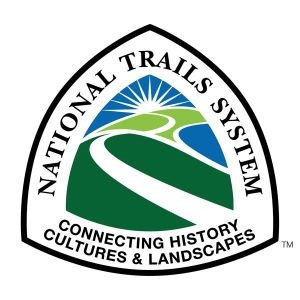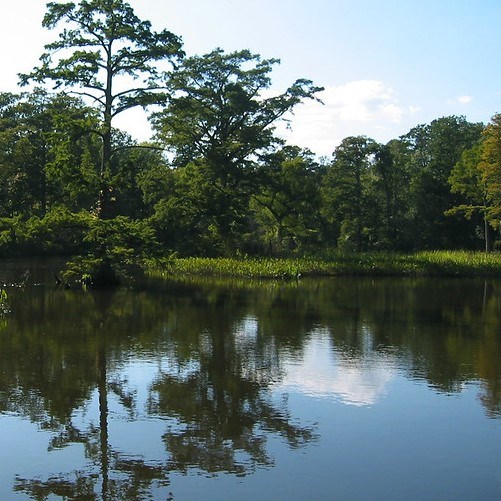
Earlier PlanningLegislation to establish the Captain John Smith Chesapeake National Historic Trail was signed into law on December 19, 2006, as an amendment to the National Trails System Act (16 U.S.C. 1244 25). The Statement of Significance is a report on national significance used to determine whether the proposed trail met criteria for designation as a national historic trail. Comprehensive Management PlanThe National Park Service completed the comprehensive management plan and environmental assessment (CMP/EA) for the trail in February 2011, following a two-year public planning process. The comprehensive management plan is required by the National Trails System Act. The environmental assessment is required by the National Environmental Policy Act. The CMP/EA:
The comprehensive management plan will guide decisions about the trail for the next 20 years. The plan will be implemented through a series of 3-5 year action plans, as funding becomes available. Read the Comprehensive Management Plan Executive Summary or contact us to receive a hard copy of the full report by mail. Finding of No Significant Impact (FONSI) 
Trail Extended by the Secretary of the InteriorOn May 16, 2012, Department of the Interior Secretary Ken Salazar designated water trails on four rivers as new historic connecting components to the Chesapeake National Historic Trail. Extending the trail by 841 miles, the newly designated components are the Susquehanna River, the Chester River, the Upper James River, and the Upper Nanticoke River.

Virginia State Parks Segment PlansThe comprehensive management plan determined that the trail can best be developed and managed in smaller segments, given the trail's more than 3,000-mile scope and diverse resources. The segment planning approach helps NPS effectively understand the local resources, opportunities, and partner capacities in each segment. James RiverThe James River segment was the first stretch of the Chesapeake National Historic Trail to undergo segment planning. The National Park Service worked with the James River Association, Chesapeake Conservancy, the U.S. Fish and Wildlife Service, and the Commonwealth of Virginia in a collaborative planning process to identify resources, specific actions, and partnerships required to develop and manage the trail in the segment between Richmond and the Route 17 Bridge, including the free-flowing tidal portion of the Chickahominy River. Five focus areas were identified and a set of strategies developed for enhancing visitor experience along the James River segment of the Trail. Potomac River Segment PlanPlanning along the Potomac River segment of the trail began in early 2013 and has engaged hundreds of stakeholders including trail partners, public land managers, private developers, conservation groups and many other affiliations interested in the history, health, prosperity and recreational enjoyment of the tidal Potomac River. Multiple focus group meetings, stakeholder workshops and individual interviews were held over the course of two years to learn what people are doing, what they would like to be doing, and what could be done to enhance trail visitor experiences. Information was also gathered on any planned actions that would help address the identified needs and opportunities. The planning team included representatives from the Commonwealth of Virginia, the state of Maryland, the Potomac Heritage National Scenic Trail, the Star-Spangled Banner National Historic Trail, the Potomac Conservancy, and the Chesapeake Conservancy. Read the Potomac River Segment Plan Executive Summary or contact us to receive a hard copy of the full report by mail. Lower Susquehanna River Segment PlanThe segment plan for the lower portion of the Susquehanna River was completed in 2018. The Lower Susquehanna is defined as the 74-mile corridor between the mouth of the Susquehanna near Havre de Grace, Maryland and its confluence with the Juniata River just north of Harrisburg, Pennsylvania. The planning team for the segment plan included representatives from the National Park Service Chesapeake, Maryland Department of Natural Resources, Pennsylvania Department of Conservation and Natural Resources, Lower Susquehanna Heritage Greenway, Susquehanna Heritage, Chesapeake Conservancy, and the Susquehanna Riverlands Conservation Landscape, represented by staff from the Lancaster County Conservancy and Lancaster County Planning Commission. The planning team envisioned ways to make the trail more visible and meaningful for visitors to the region. Interpretation, conservation, and public access to the water are central to the plan. Collaborative opportunities are also outlined for the two other national trails present in the region: Star-Spangled Banner National Historic Trail and Washington-Rochambeau National Historic Trail. Read the Lower Susquehanna River Segment Implementation Plan, or contact us to receive a hard copy of the full report by mail. 
Conservation StrategyThe trail's Comprehensive Management Plan called for development of a conservation strategy to guide conservation of resources which contribute to the visitor experience along the trail. Throughout 2012, the National Park Service, in collaboration with the Chesapeake Conservancy, consulted closely and regularly with the trail Advisory Council in developing a Conservation Strategy for the Captain John Smith Chesapeake National Historic Trail. The Advisory Council, whose members were appointed by the Secretary of the Interior, represented a wide range of state and federal agencies, non-governmental organizations, and citizens. In short, the strategy provides the means for defining priority conservation areas relative to the trail and designing appropriate conservation methods. Its focus is on saving the places that enrich visitor experiences and recreation along the trail and that contribute synergy to the many programs working to improve quality of life along the Chesapeake Bay and its rivers. The Conservation Strategy sets out a long-term strategy for conserving lands important to the visitor experience of the Chesapeake National Historic Trail. Its purpose is several-fold:
Read the Conservation Strategy Overview or contact us to receive a hard copy of the full report by mail. Interpretive PlanAs part of the trail planning process the National Park Service has prepared an interpretive plan for the Captain John Smith Chesapeake National Historic Trail. The interpretive plan provides a vision for interpretive, educational, and recreational opportunities related to the trail, and defines short-and long-term goals for making meaningful connections between visitors and Chesapeake Bay resources. A product of collaboration with Chesapeake Bay Gateways, agencies, tribes, community organizations, and others, the interpretive plan is a guiding document with reference information that trail partners can use to develop visitor experiences along the trail. |
Last updated: October 18, 2024
